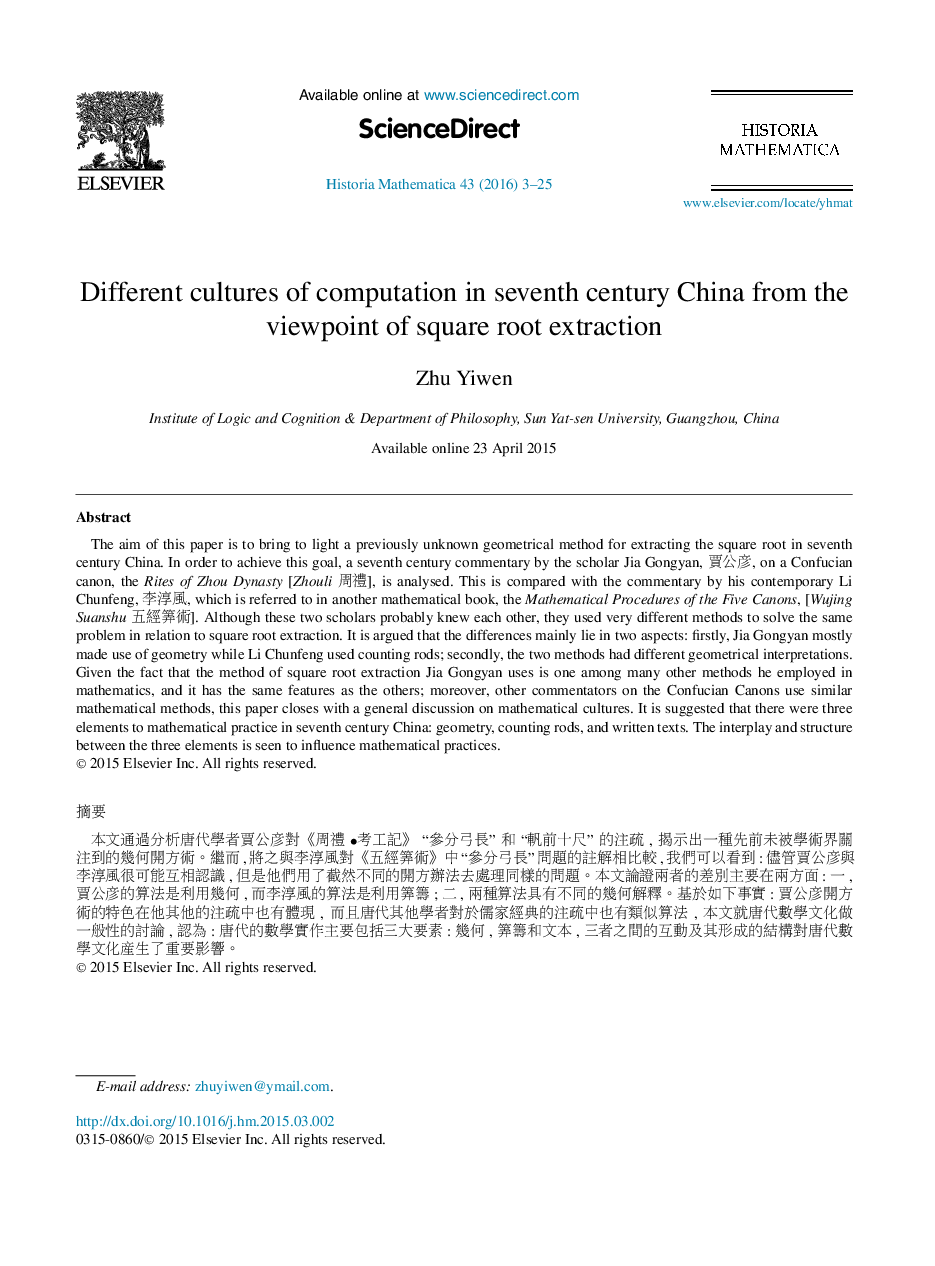| کد مقاله | کد نشریه | سال انتشار | مقاله انگلیسی | نسخه تمام متن |
|---|---|---|---|---|
| 1158287 | 959349 | 2016 | 23 صفحه PDF | دانلود رایگان |
The aim of this paper is to bring to light a previously unknown geometrical method for extracting the square root in seventh century China. In order to achieve this goal, a seventh century commentary by the scholar Jia Gongyan, 賈公彥, on a Confucian canon, the Rites of Zhou Dynasty [Zhouli 周禮], is analysed. This is compared with the commentary by his contemporary Li Chunfeng, 李淳風, which is referred to in another mathematical book, the Mathematical Procedures of the Five Canons, [Wujing Suanshu 五經筭術]. Although these two scholars probably knew each other, they used very different methods to solve the same problem in relation to square root extraction. It is argued that the differences mainly lie in two aspects: firstly, Jia Gongyan mostly made use of geometry while Li Chunfeng used counting rods; secondly, the two methods had different geometrical interpretations. Given the fact that the method of square root extraction Jia Gongyan uses is one among many other methods he employed in mathematics, and it has the same features as the others; moreover, other commentators on the Confucian Canons use similar mathematical methods, this paper closes with a general discussion on mathematical cultures. It is suggested that there were three elements to mathematical practice in seventh century China: geometry, counting rods, and written texts. The interplay and structure between the three elements is seen to influence mathematical practices.
摘要本文通過分析唐代學者賈公彥對《周禮
• 考工記》 “參分弓長” 和 “軓前十尺” 的注疏 , 揭示出一種先前未被學術界關 注到的幾何開方術。繼而 , 將之與李淳風對《五經筭術》中 “參分弓長” 問題的註解相比較 , 我們可以看到 : 儘管賈公彥與 李淳風很可能互相認識 , 但是他們用了截然不同的開方辦法去處理同樣的問題。本文論證兩者的差別主要在兩方面 : 一 , 賈公彥的算法是利用幾何 , 而李淳風的算法是利用筭籌 ; 二 , 兩種算法具有不同的幾何解釋。基於如下事實 : 賈公彥開方 術的特色在他其他的注疏中也有體現 , 而且唐代其他學者對於儒家經典的注疏中也有類似算法 , 本文就唐代數學文化做 一般性的討論 , 認為 : 唐代的數學實作主要包括三大要素 : 幾何 , 筭籌和文本 , 三者之間的互動及其形成的結構對唐代數 學文化產生了重要影響。
Journal: Historia Mathematica - Volume 43, Issue 1, February 2016, Pages 3–25
